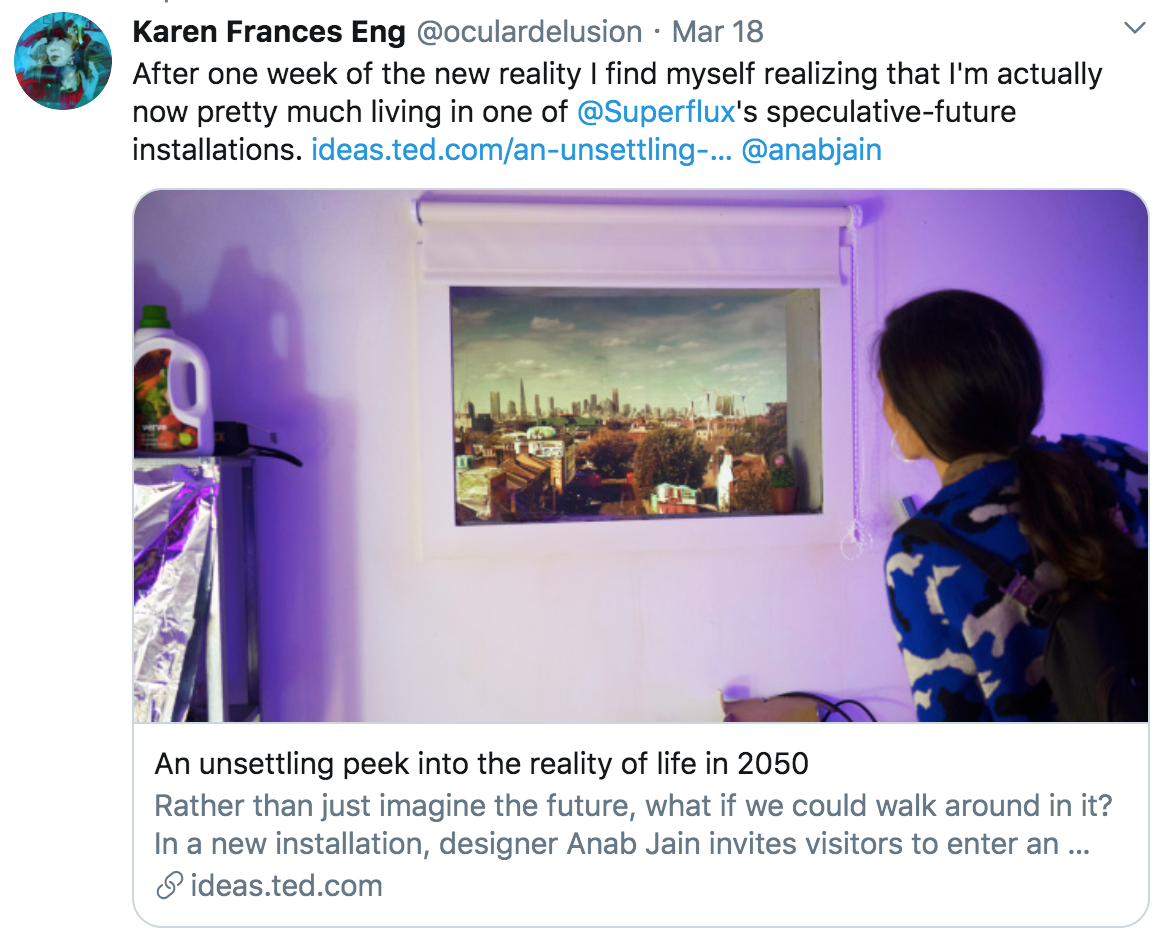Projects
Mitigation of Shock (Singapore)
Leanne Fischler, Matthew Edgson,
Ed Lewis,
NICOLA FERRAO
Take a tour around a future Singaporean apartment, radically adapted to deal with the consequences of climate change.
Superflux would like to present our second iteration of Mitigation of Shock, exhibited as part of 2219: Futures Imagined the major exhibition at ArtScience Museum in celebration of the Singapore Bicentennial. The installation transports visitors to a Singaporean apartment set in the second half of the 21st century and allows them to experience how we might live in a world transformed by global warming.
Mitigation of Shock was first commissioned in 2018 for After the End of The World at Centre de Cultura Contemporània de Barcelona. To learn more about this earlier installation, set in London around 2050, and the thinking behind it visit our project page for Mitigation of Shock (London). Read on to learn more about Mitigation of Shock (Singapore) and the key developments in our thinking that led to this new installation.
CONTEXT
Climate projections show that, within the next few decades, the world is likely to experience immense problems with food insecurity, extreme weather, and resource scarcity. Yet with data and projections alone, it is difficult to imagine how the consequences of climate change will alter our everyday lives. In 2016 we began Mitigation of Shock, an ongoing experiment in making climate change tangible, relatable and specific. Our aim: instead of leaving visitors scared and unprepared by the challenges of this likely future, we wanted to share methods and tools for surviving there.
We were delighted to be invited by Honor Harger from ArtScience Museum to build a new iteration of Mitigation of Shock as part of an exhibition exploring the next 200 years of Singapore’s future. Aware of our vastly different geographic context, and our experiential distance from Singapore, we embarked on a deep research phase. As part of this we spoke to Dr Benjamin Horton, a climate scientist at Earth Observatory of Singapore to understand what life in Singapore might feel like in 70 years. These conversations provided a vital starting point to further developing our scenarios based on rising sea levels, volatile weather, and their impacts on agriculture, trade, architecture, governance and community life.
The ambition of our project is to make visible and experiential something that we cannot experience today today – a future in which extreme weather conditions, economic uncertainty and broken supply chains have irrevocably changed daily life. We hope that Mitigation of Shock will highlight the urgency to act now on climate change.
However, this is also a hopeful vision. Mitigation of Shock (Singapore) tells the story of the resourcefulness of people, and their radical adaptations to not only survive but thrive in a changed world. New ways of living within our planets’ limits are possible.

THE INSTALLATION
The installation is set in a future Singaporean home that looks out onto a flooded city, both transformed to mitigate the effects of climate change. This HDB (Housing and Development Board) apartment is situated in 2068 and tells the story of how a local family has adapted to global warming, rising sea levels and their wider implications.
Before visitors enter this apartment of the future, they find a kayak resting against the wall near the front door. On its side is a sticker saying ‘Ministry for Climate Response: Emergency Issue’ but the wear and scratches on the kayak itself indicate that this item is no longer only used in emergencies. This kayak has become a monthly, if not weekly, necessity.
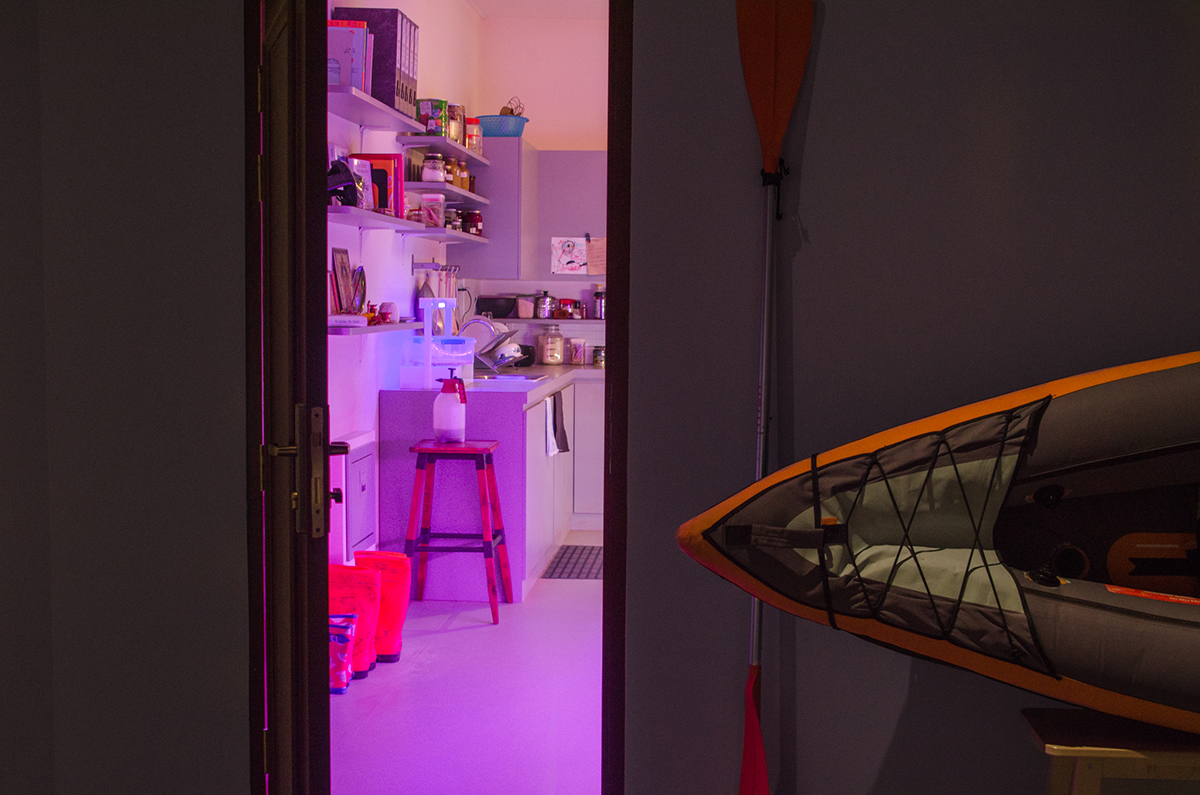
Upon entering the apartment, visitors find themselves in a familiar, Singaporean home. In exploring the space, however, they will find themselves surrounded by evidence of how everyday life might be different in this future world. Visitors pass rain ponchos; snorkeling equipment; handmade fishing traps; and spears made from old circuit boards amongst a collection of tools for capturing and foraging for food. These handmade pieces – created from flotsam, repurposed electronics, mechanical and plastics remnants – reflect ingenuity, care and craftsmanship. In contrast with the high-tech contraptions in Mitigation of Shock (London), the tools for survival that we explored for Mitigation of Shock (Singapore) are based on a ‘slower’ form of resourcefulness. These methods for survival are more in tune with the natural world.

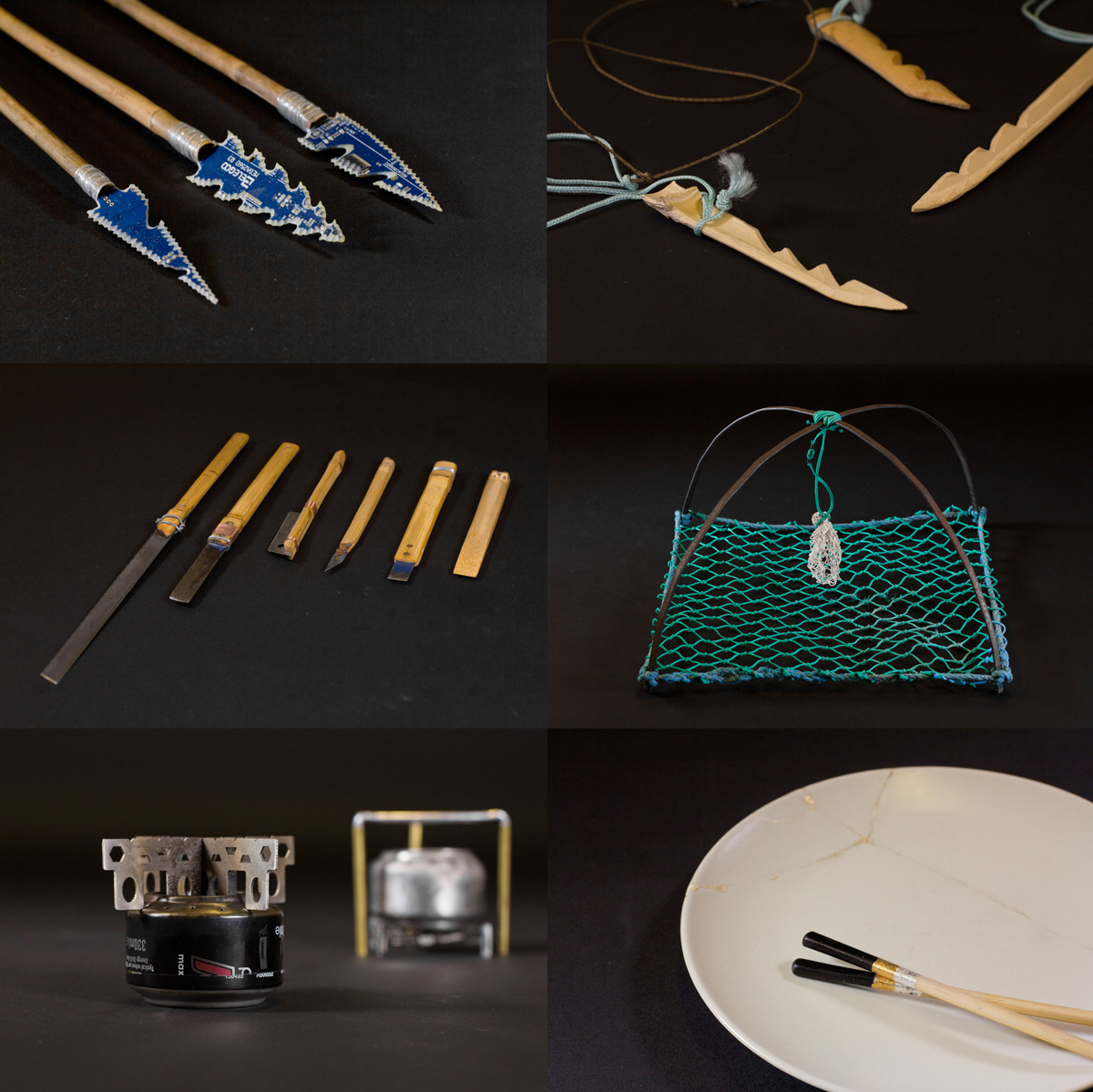
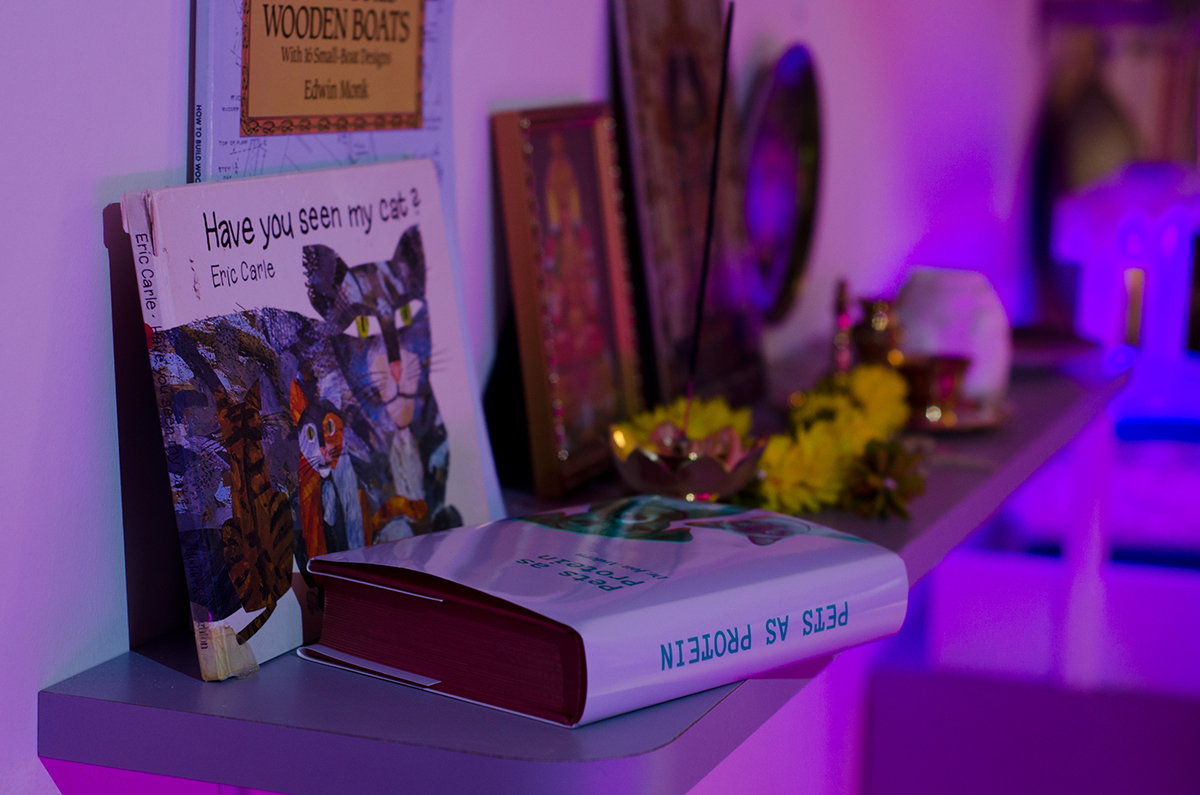
Shelves are lined with books such as ‘Pets As Protein’, ‘How to Cook in a Time of Scarcity’ and ‘Feast for Free – Foraging in Pulau Ujong’. Amongst them, a shrine to a miscellany of food and productivity deities.
In the kitchen, the remains of a recently cooked meal sit on the counter. Jars of preserved foods line the shelves, all labelled with the location in which they were foraged. A series of handmade cookers sit upon the kitchen countertop and a family ration card lies on a shelf next to a state-issued rice sack, both supplied by the state Ministry for Climate Response – this is a future in which stable food supply is no longer a certainty.
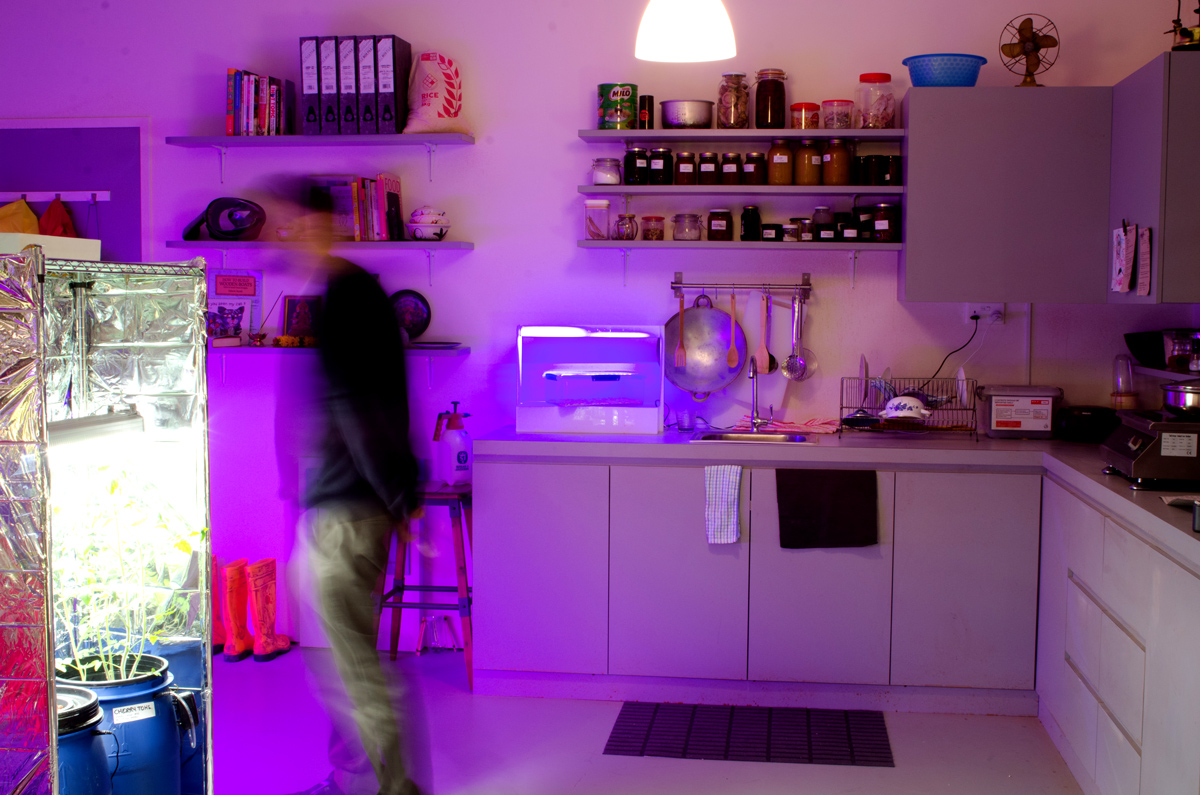
Prized food items from the past are kept locked away. Previously abundant ingredients (spices, stock, sauce sachets, Milo powder) are now stored in locked containers out of reach from accidental damage or spontaneous use. This future is far from the abundance of our present; the apartment’s inhabitants have learned to see a new value in frugality, resourcefulness and ingenuity.

As visitors explore the kitchen, a news broadcast begins on the radio. The familiar format of narration provides an insight into the tangible impacts that climate change has had: weather disruption, sea level rise and continued political unrest in the region and globally have led to ongoing privation.

Upon the table sits a newspaper set in Singapore 2068. The headlines ‘Millions struggle amid ongoing food shortages. Crop failures across Southeast Asia result in continued disruption of food supply chains’
The kitchen is lit with a sterile, purple glow. Searching for its source, visitors will notice assorted high-tech lamps hanging from a large industrial shelving unit lining the wall opposite the kitchen. The most significant impact of food insecurity on this apartment: this family has been forced to surrender part of their home to grow their own food, mitigating against the effects of frequent shortages and global supply issues. Experimental food production stacks occupy the space once given to relaxation — transforming the home into a manufactory for producing the means of survival and self-reliance. These “grow structures” contain plastic buckets and barrels from which delicate, leafy plants grow. Fog oozes slowly around their stems.
These particular experiments feel evocative of those that dominated the homes of people twenty years earlier, perhaps recognisable from Mitigation of Shock (London). Based on once-cutting-edge technologies such as ‘Fogponics’, these indoor growing stacks feel almost out of date now. Fogponics produced a high yield in return for minimal effort; but such systems are very fragile. That need for rapid growth and high yield potential has been superseded by a new priority: resilience and dependability.
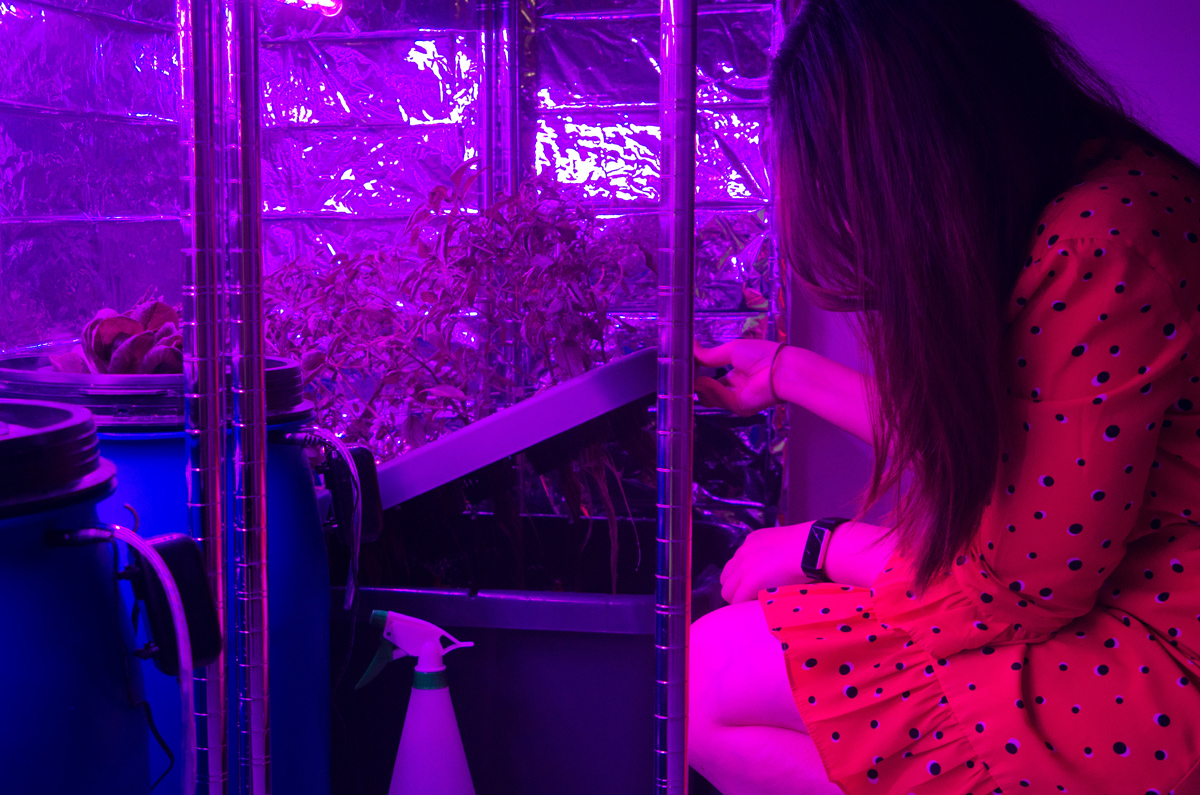
What good is a high return on input if the system cannot be depended on in the increasingly frequent power and water outages? With the abundance of materials and components from the previous consumerist paradigm becoming increasingly unreliable, a system with so many complex assemblies and components could no longer be justified. As their skills and ecological experience increased, this family has moved away from the resource-heavy food computers to a slower, more skill-based system. As visitors walk further into the apartment, they can see for themselves how this family’s method of self-sustenance has developed.
Stepping around the internal wall into the living area of the apartment, visitors are hit by the sudden change to the bright, warm light of full-spectrum grow lamps. Assorted plants overflow from bamboo structures lining the walls of the space. In stark contrast to the kitchen area, the living room feels homely and full of life.
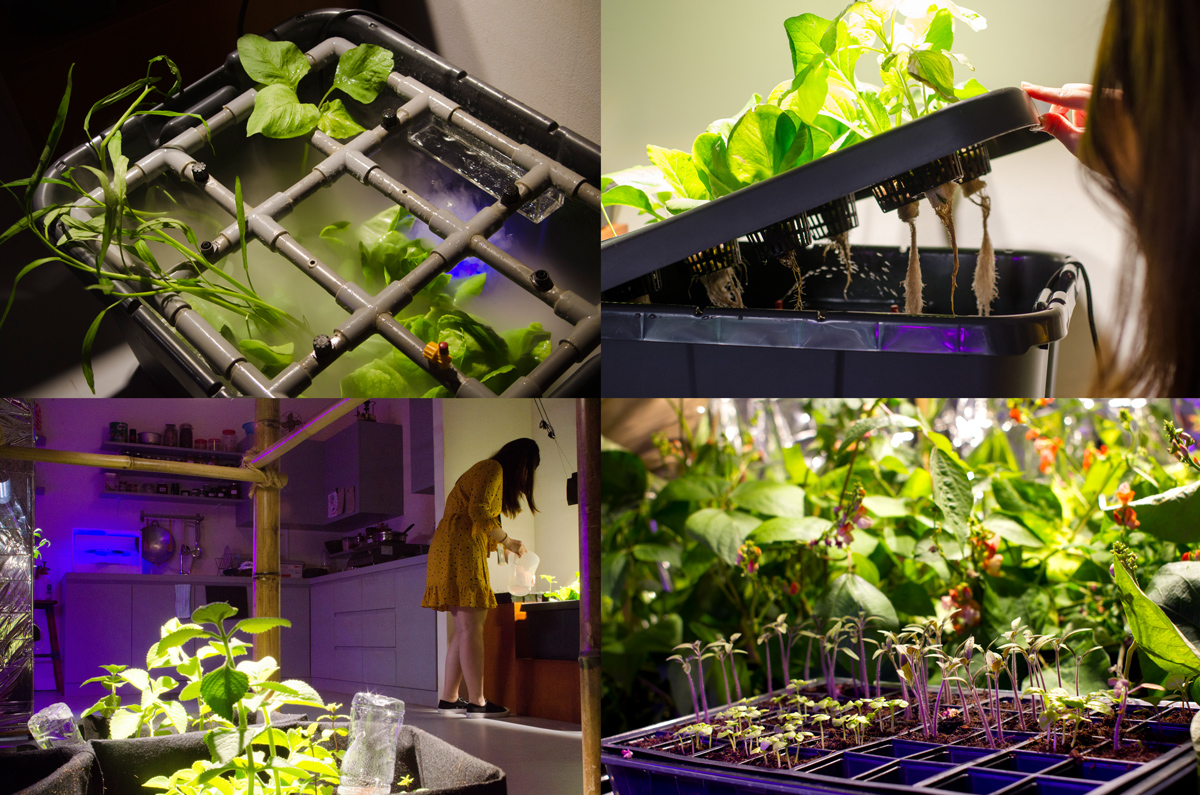 Inspired by the principles of Permaculture, Terra Preta and the No-Dig gardening movement, the new plant growing methods are based on organic, soil-based, fabric grow bags. Into each of these bags, is planted a carefully chosen mix of ‘Companion Plants’ – plants that complement each other to create a balanced and more productive system. Each bag resembles a miniature ecosystem: nitrogen-fixing plants provide nutrients for the soil; ground cover plants prevent moisture from evaporating; climbing plants use the taller plants to get closer to the light sources; worms circulate nutrients throughout the soil and, most importantly, invisible mycorrhizal fungi create and transport nutrients between plants.
Inspired by the principles of Permaculture, Terra Preta and the No-Dig gardening movement, the new plant growing methods are based on organic, soil-based, fabric grow bags. Into each of these bags, is planted a carefully chosen mix of ‘Companion Plants’ – plants that complement each other to create a balanced and more productive system. Each bag resembles a miniature ecosystem: nitrogen-fixing plants provide nutrients for the soil; ground cover plants prevent moisture from evaporating; climbing plants use the taller plants to get closer to the light sources; worms circulate nutrients throughout the soil and, most importantly, invisible mycorrhizal fungi create and transport nutrients between plants.
In this future, the need for more resilient systems has led to a shift away from the desire to control nature towards a respect for how nature itself solves problems. These are stable and sustainable indoor growing systems that can be relied upon in uncertain times.
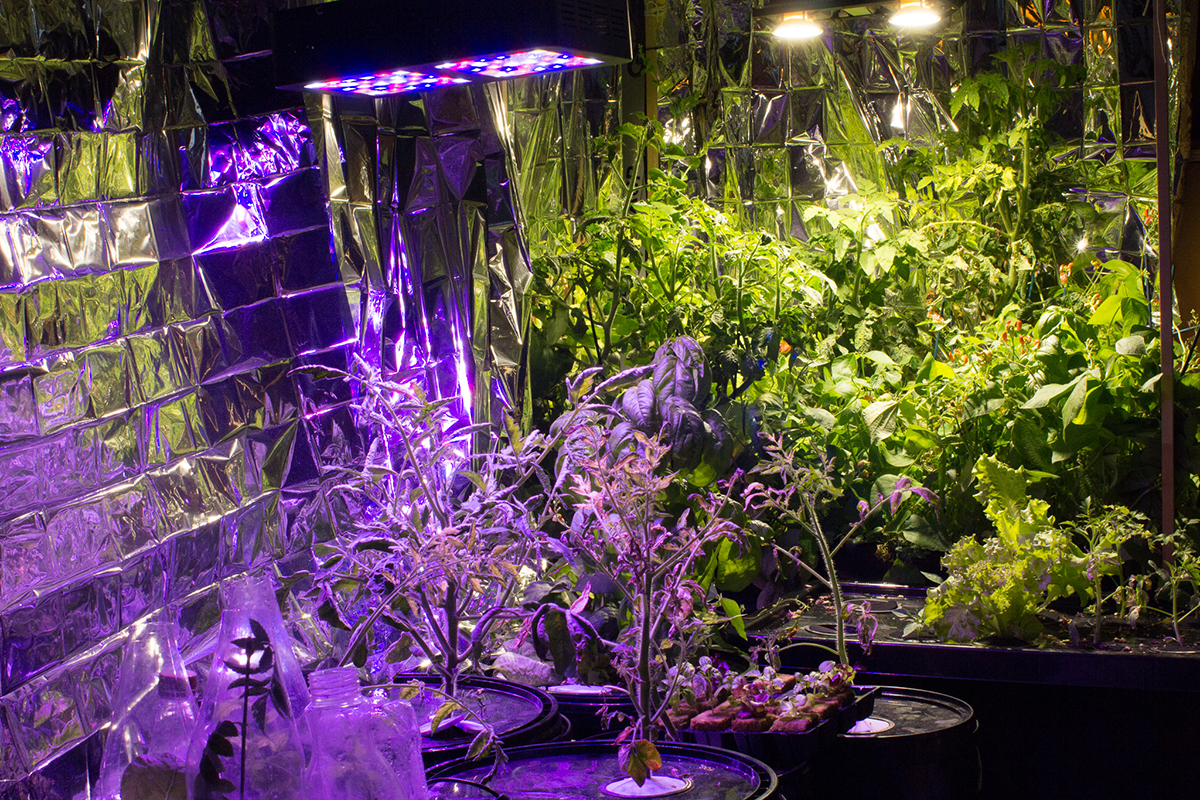
This new approach to growing food has led to a change in social order. It has shown this family the benefits in working together with natural systems (wild, permaculture inspired organic growing) rather than controlling them top-down (controlled hydroponic plant growing systems). Highlighting this is the shift from blue and red grow lights towards warm white lights that mimic the full spectrum of the sun’s rays and provide for all the various metabolic activities of the plants. Mitigation of Shock (Singapore) tells the story of moving away from using nature for our own purposes.
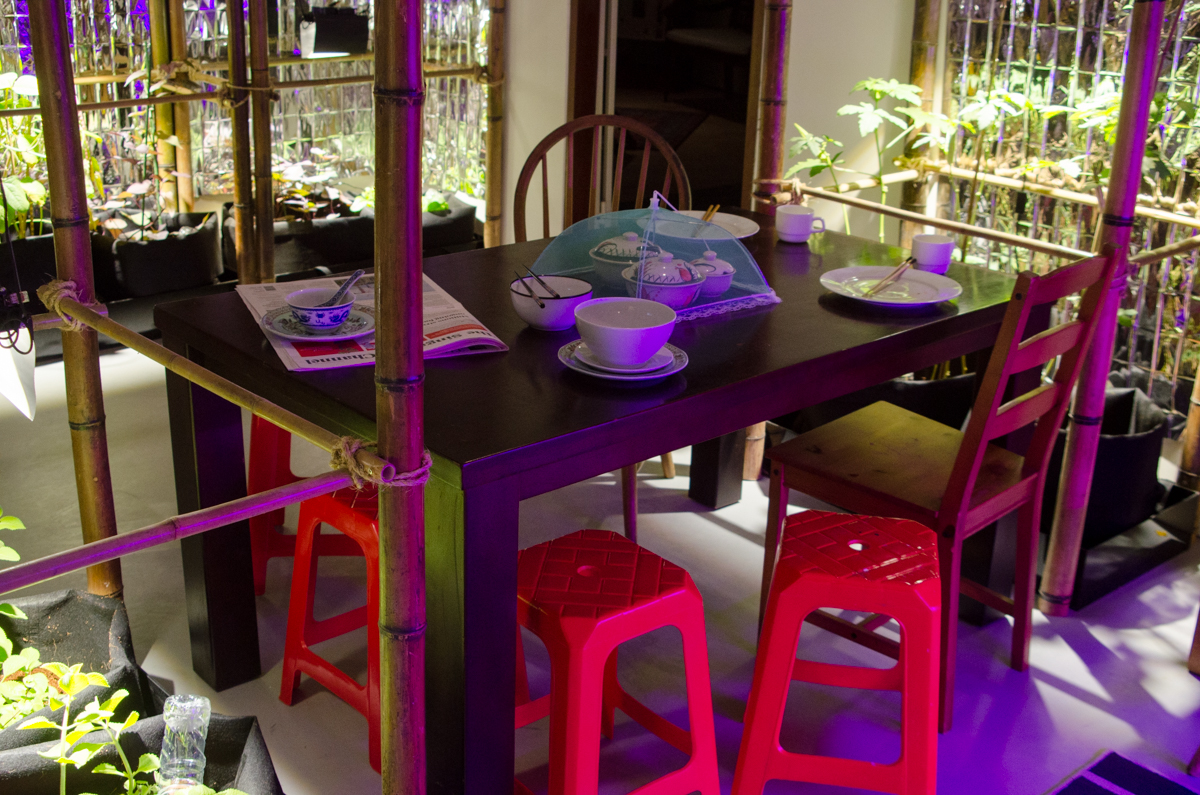
Surrounded by leafy growing experiments is the family dining table. The bamboo structure stretches over the dining table giving the impression that they’re not dining next to the plants, but amongst them.
This family may have been forced to sacrifice much of their living area, but they’ve embraced this change to their home and way of life. They now carry out their lives in direct proximity to the warm, green, lush organic growing areas; choosing to live amongst their new means of surviving for reasons much deeper than self-sufficiency.

A small, cosy seating area has been tucked amongst the grow pots; a child’s toys are scattered below leaves and amongst stems; whittling and woodworking tools show that this area is used for slow and meditative craft – perhaps even done for enjoyment over necessity.
In Mitigation of Shock (Singapore), we wanted to explore the shift towards a way of life that is more in line with nature. This is shown not only in the method of producing food, but also in a slower, more meditative way of being. Perhaps, in that, lies a change in our social order in which people want to find paths to return to a non-anthropocentric way of life that accommodates our natural constraints and helps us to act as stewards for the environment around us. Ingeniously assembled food computers have been superseded by a resilient and sustainable indoor system. The home is alive with multi-species inhabitants, surviving and thriving together in this indoor microcosm.
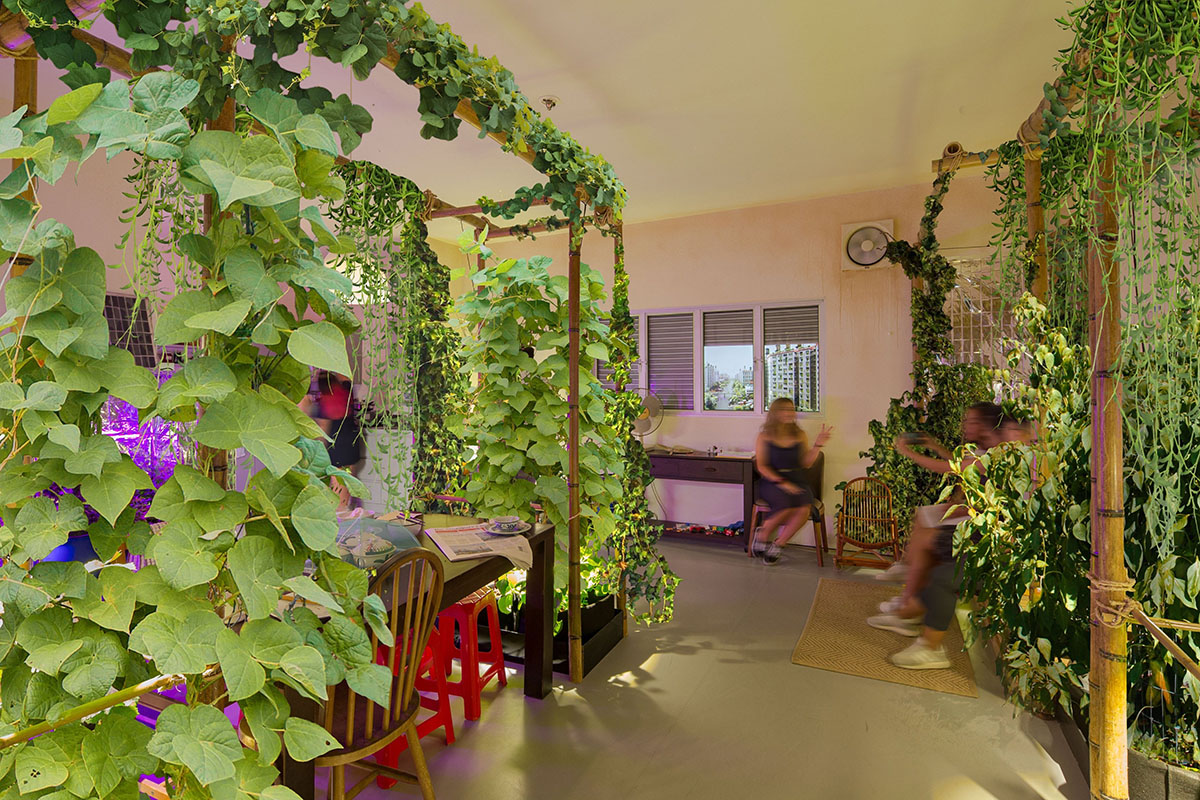 This visualisation shows how we imagine the apartment and its multispecies companions growing and thriving a few months into the installation.
This visualisation shows how we imagine the apartment and its multispecies companions growing and thriving a few months into the installation.
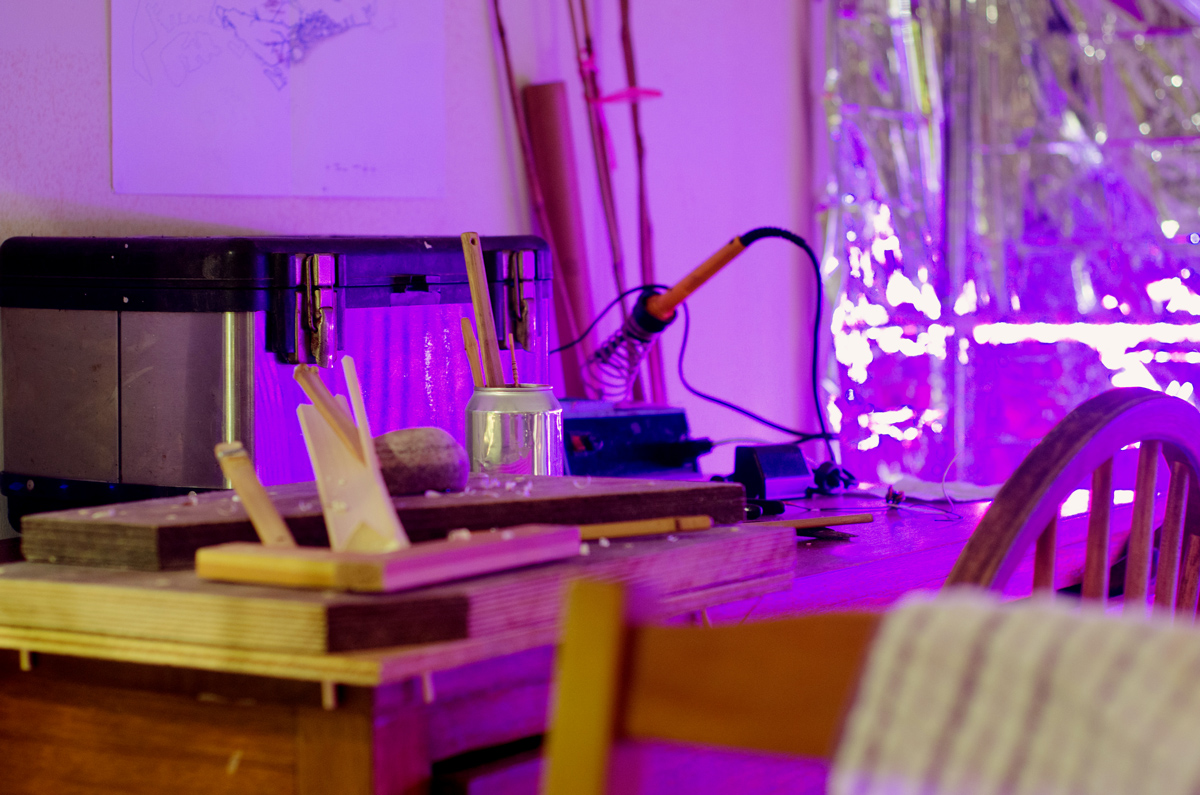
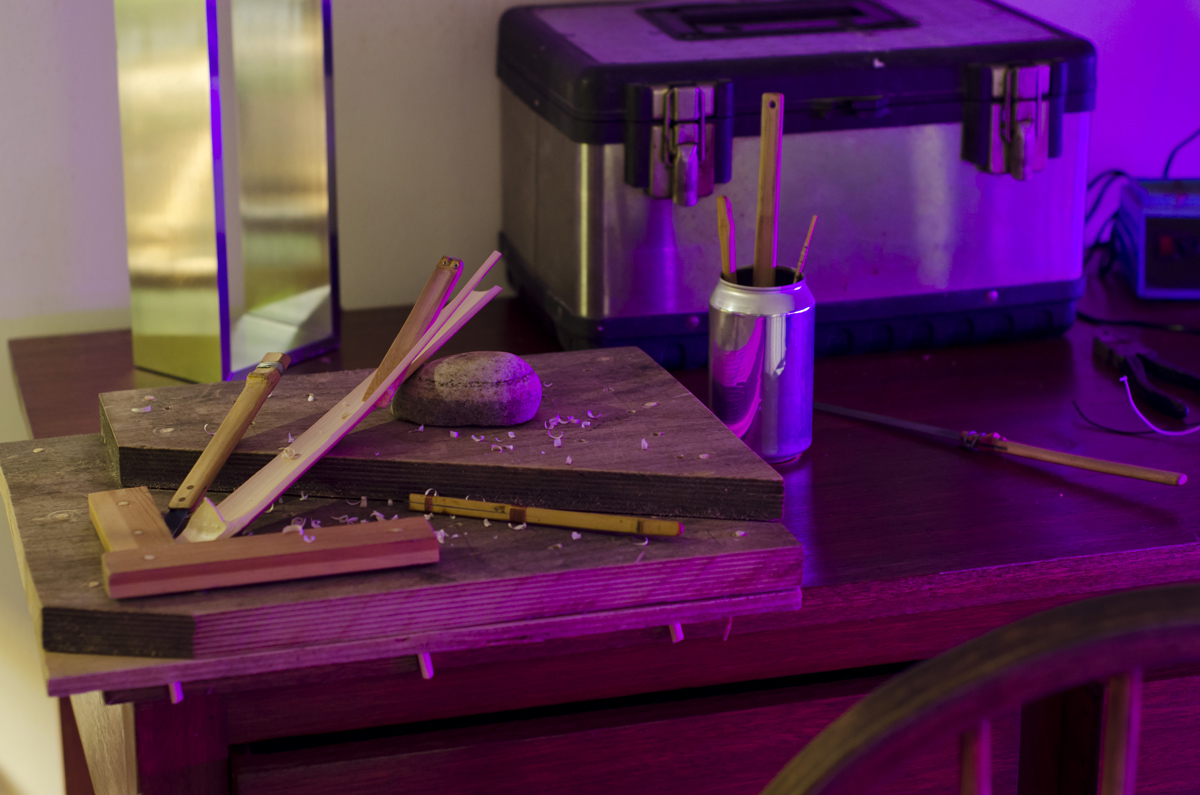
A desk, covered with tools such as a soldering iron, bits of broken down grow systems and scavenged, reclaimed materials, shows the care that goes into maintaining this way of life.
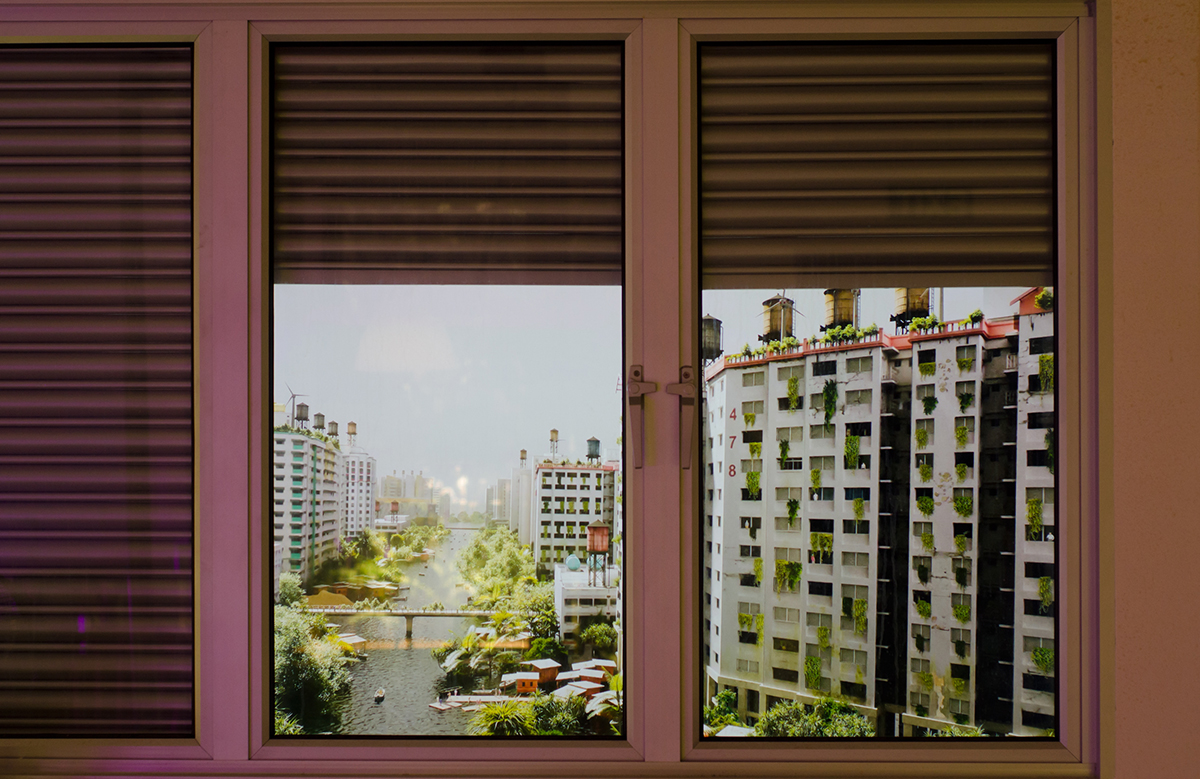
Looking out the window past the aluminium storm shutter, visitors can see a different, very wet and humid Singapore. Despite rising sea levels and flooding, the city is thriving as part of a seemingly ‘rewilded’ landscape. While some parts of the street are so deep that it’s impossible for a person to stand, the presence of nature has increased from present-day Singapore. Mangrove shrubs and trees have been encouraged and nurtured to facilitate drainage but also to bring wildlife back within the city limits for the purposes of foraging and fishing. The buildings have been adapted to accommodate this new varying sea level: the bottom floors of each building have been removed to create ‘wash-throughs’ leaving only the structural supports (looking like giant stilts) reaching down into the water. This allows water to enter and leave the buildings freely ensuring that the area can drain properly.
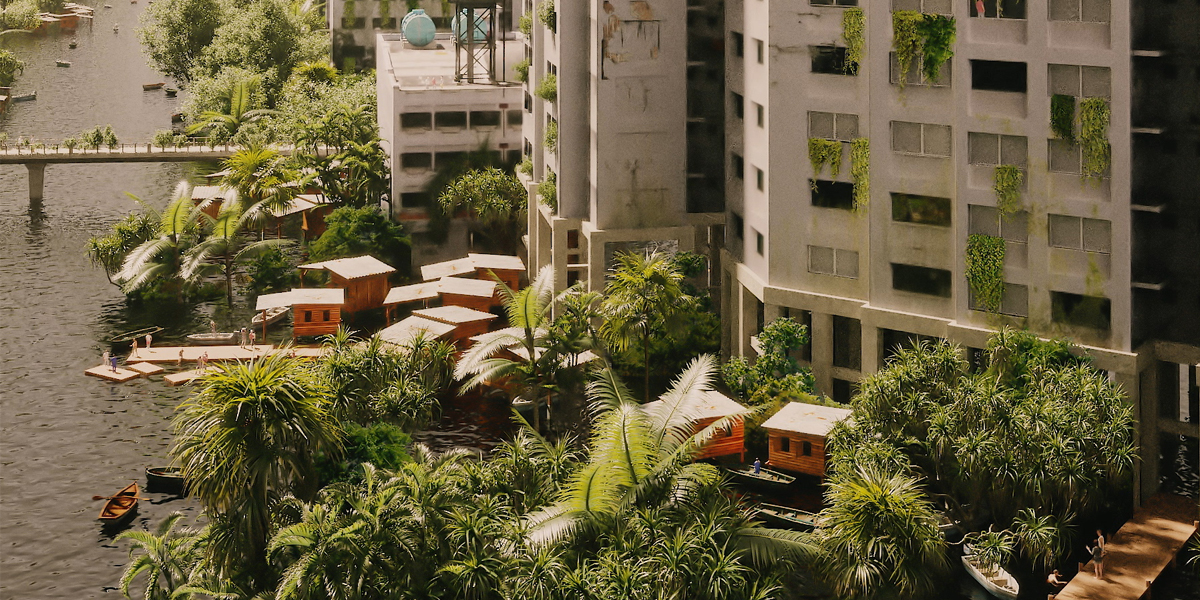
The bases of the buildings are surrounded by handmade huts, jetties on stilts and floats, accommodating those displaced by flooding.
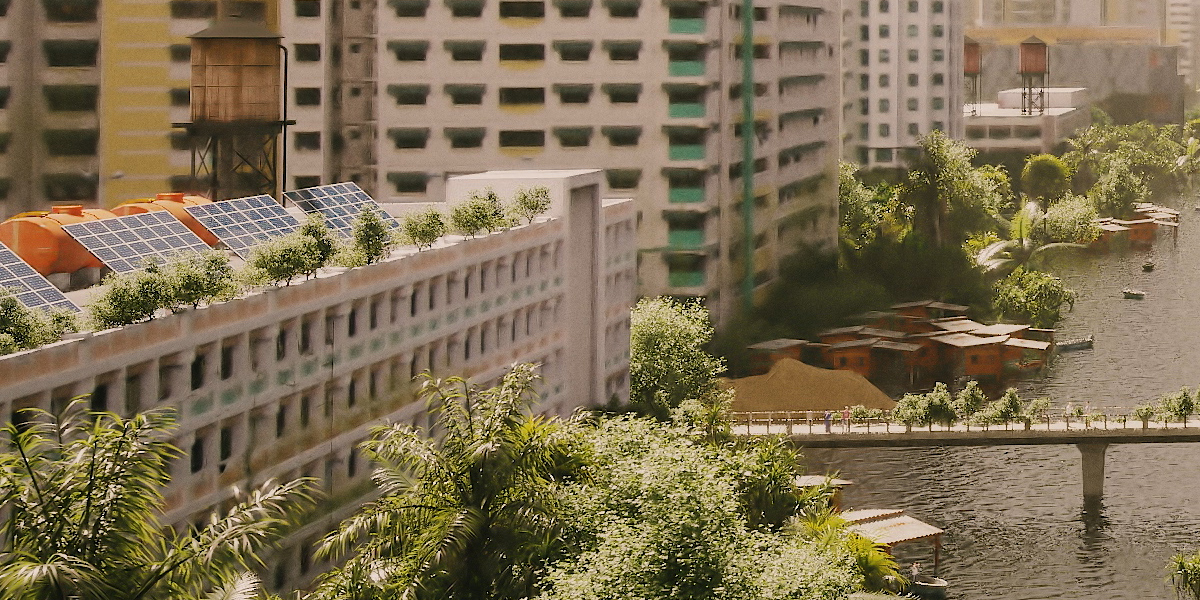
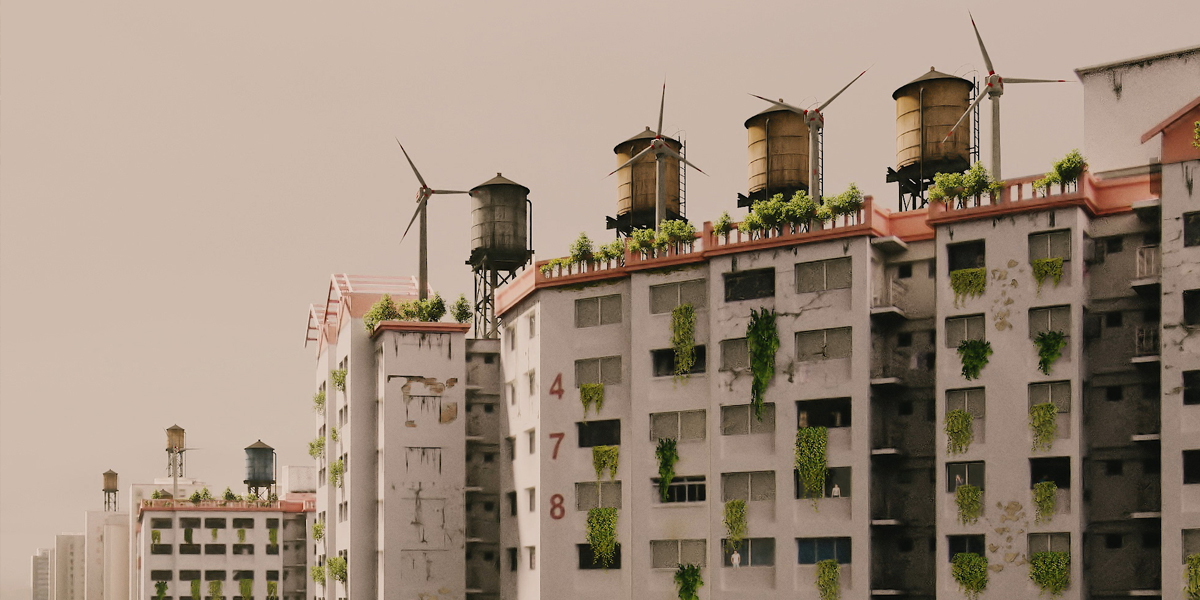
The view from the window is filled with evidence that both government and citizens have put measures in place to live within new constraints. An array of high-efficiency wind turbines can be seen, perhaps installed by the Singaporean government, and many assemblies of solar panels have also been installed. This is mirrored by the citizen-built miniature turbines on other roofs.
Though it may seem like a negative scenario, Mitigation of Shock is fundamentally an optimistic vision. The apartment is littered with evidence that the family living here have learned to not only survive, but thrive in these adverse circumstances. Every last resource is put to good use, with craft and repair approached as key activities at the centre of family life. The family have taken their learnings from the shift from high-tech to organic grow systems, and adapted them into a slower, more ecologically minded approach to life in general.
“With our practice, and works of material, and visceral realism like Mitigation of Shock, we want to write stories of extreme adaptation emerging in precarity, and thriving in the blasted ruins of capitalism. The domestic space of the apartment and its many stories bear witness to a new life emerging in instability, a life with new forms of relational agencies. It may be the end of the world as we know it, but other worlds are possible.”
Anab Jain – Calling for a More-Than Human Politics
Whilst extreme weather conditions, economic uncertainty and broken global supply chains have changed the world as we know it today — the sheer ingenuity of the inhabitants, their tools, artefacts, plants and new ways of living — tell a hopeful story of extreme adaptation taken to prosper in a post-climate change future.
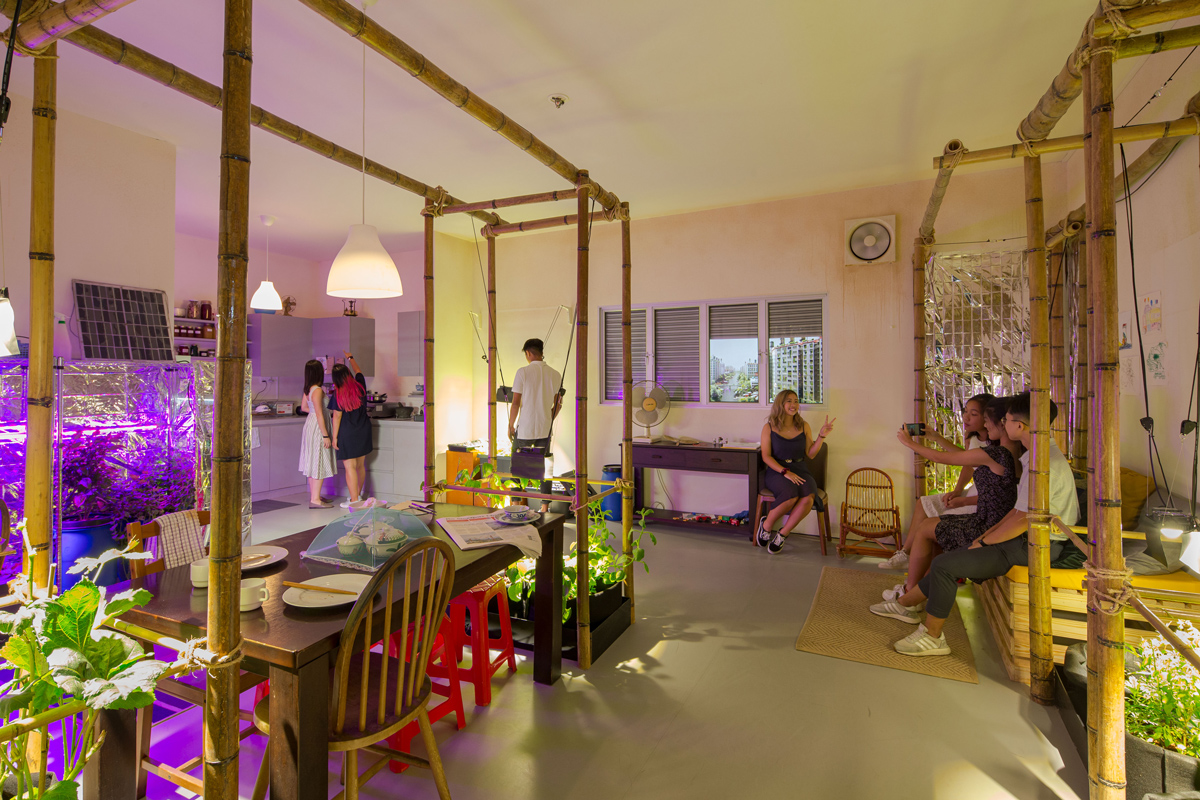
WHAT WERE THE REACTIONS?
Mitigation of Shock (Singapore) was featured in a series of design and architecture magazines. Find some of our favourite pieces below:
– “Step inside an apartment from the climate change-ravaged future”
Fast Company
– “Superflux’s speculative “Mitigation of Shock” finds unexpected relevancy in pandemic”
Mold Magazine
– “Superflux shows how future homes might face realities of climate change in 2219”
Dezeen
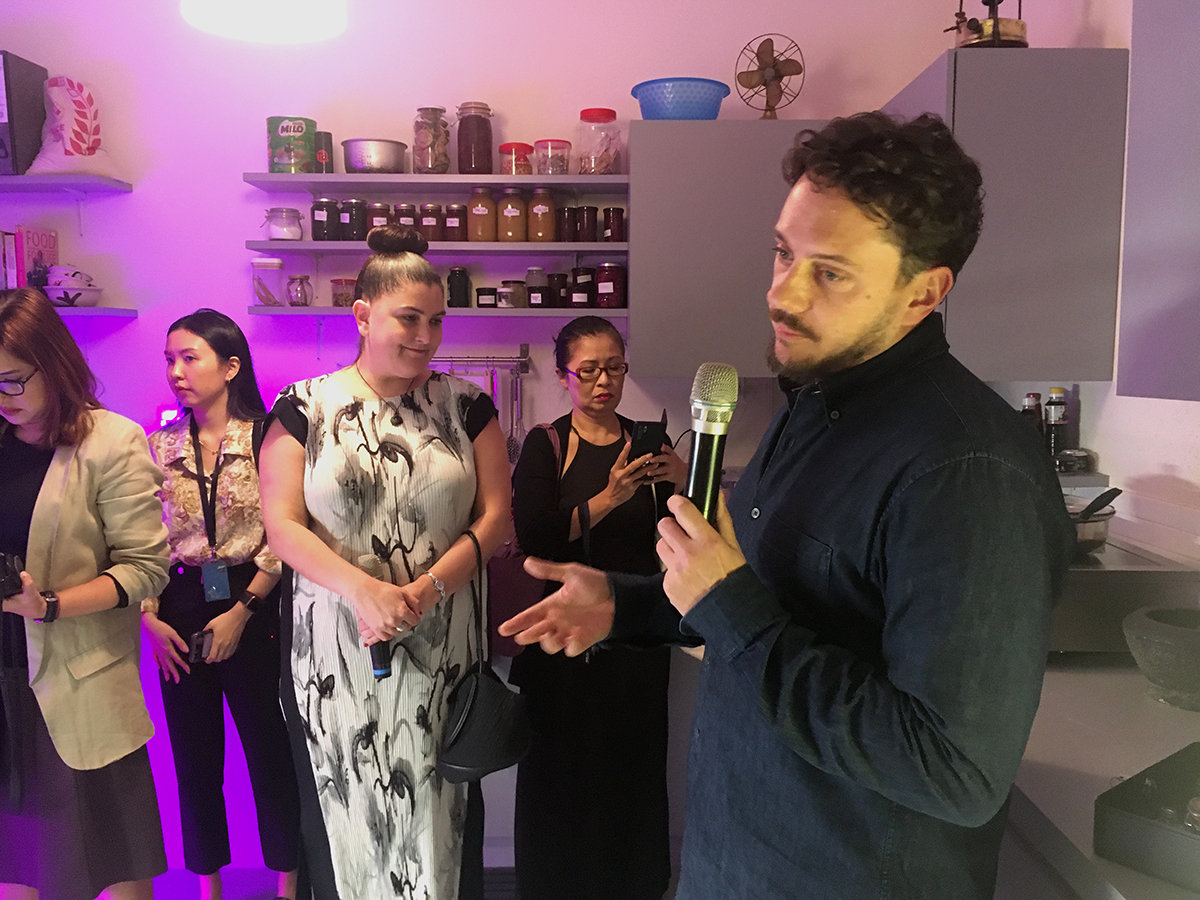
Superflux co-founder Jon Ardern speaks to press a the opening of Mitigation of Shock (Singapore)
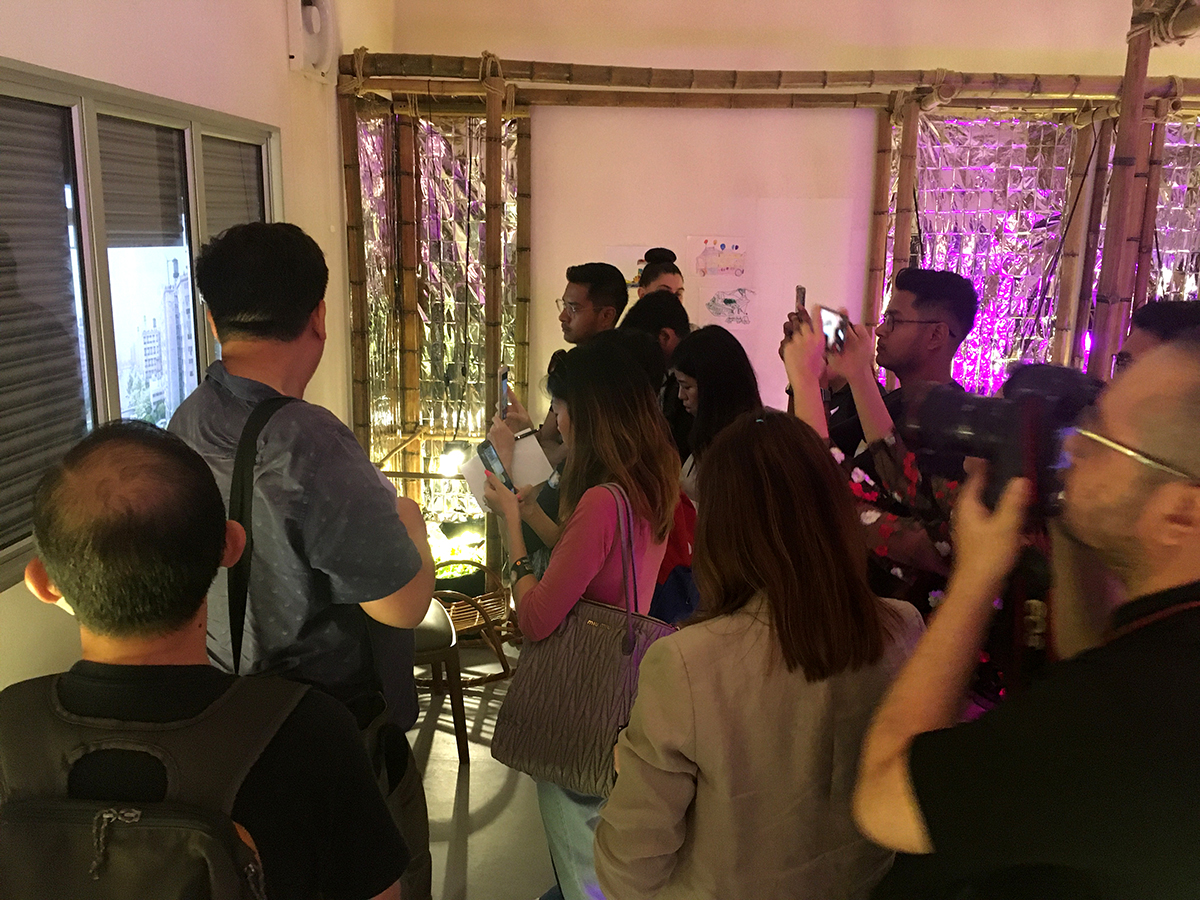
The pandemic also offered new relevance to visitors who visited in the latter months of the exhibition.
PROCESS
A glimpse of the process behind Mitigation of Shock (Singapore) is found below. To read more about the development of the indoor farming methods used in the installation, read our process blog post here.
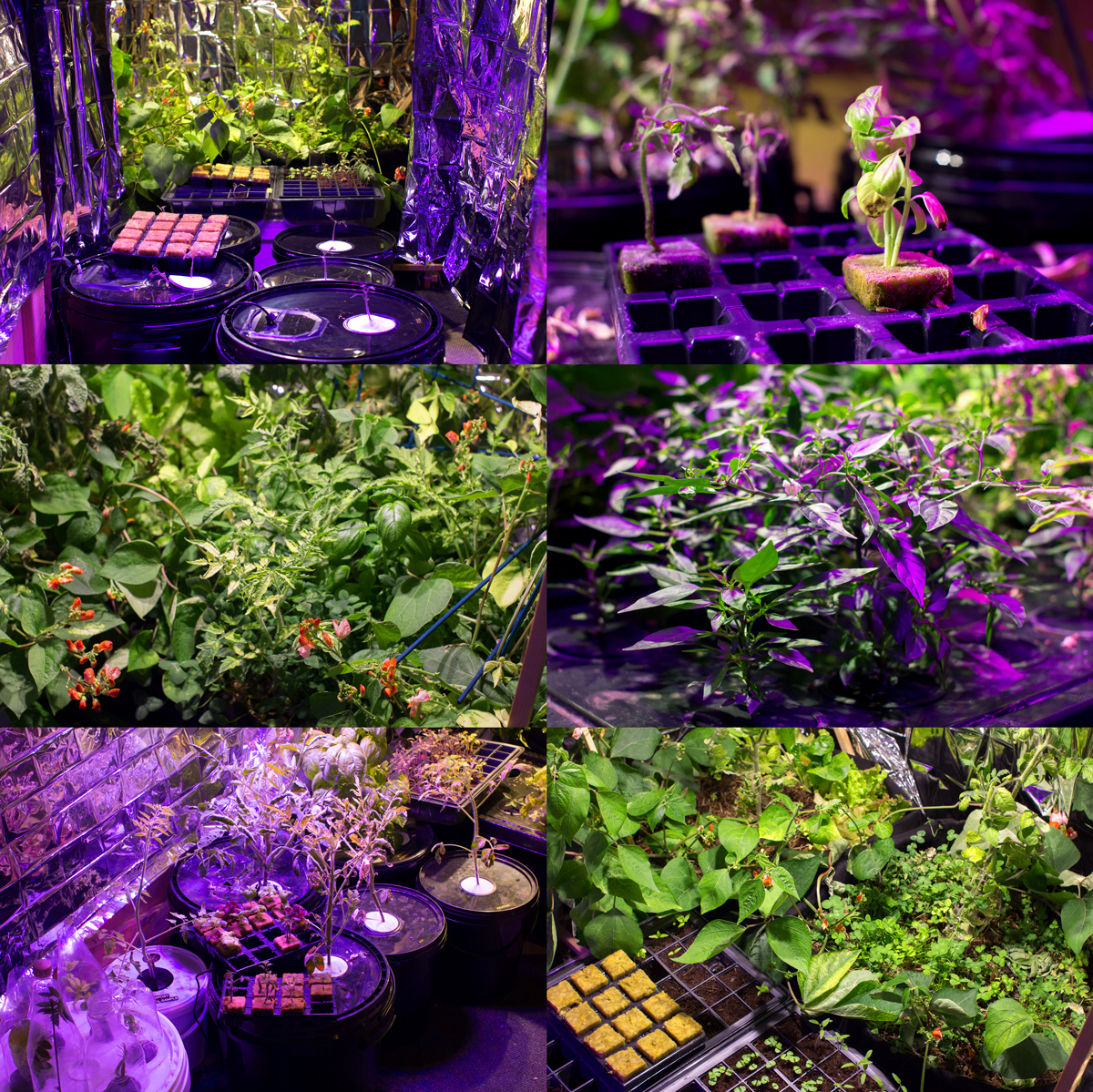
Various hydroponic and permaculture-inspired plant growing experiments taking over our studio in London.
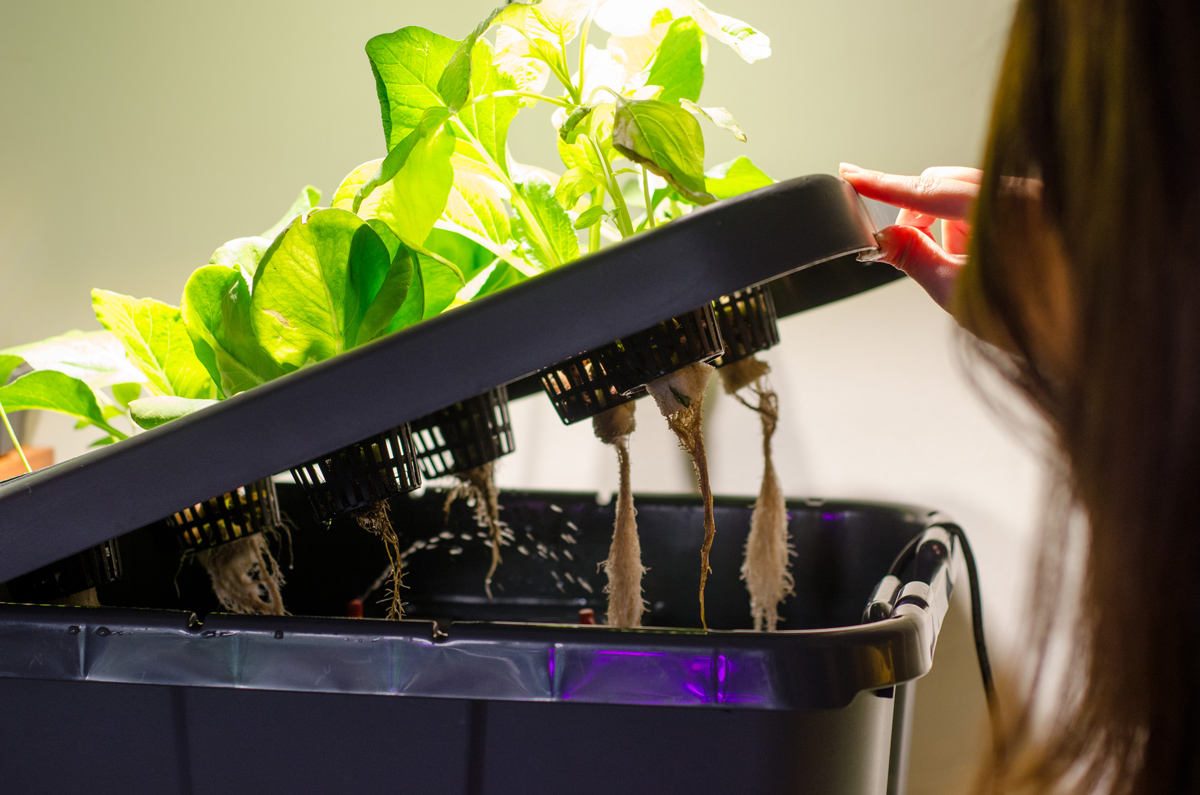
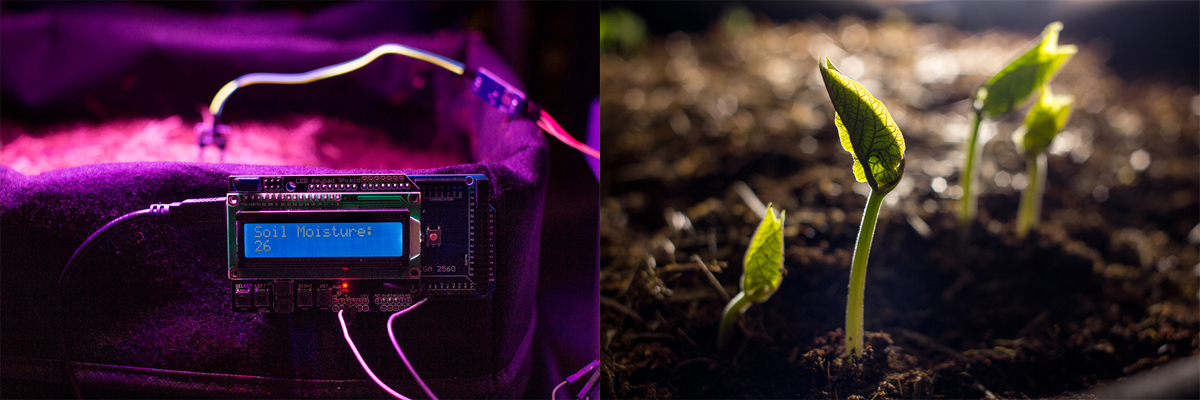
ACKNOWLEDGEMENTS
We’d like to thank Honor Harger, Adrian George, Stella Seah, Zulfadhli Hilmi, Charleen Leo, Joyce Lau and the whole team at ArtScience Museum, Singapore for their incredible support in the creation of this installation. A special mention has to go out to the co-producers, SpaceLogic, who really brought the installation together. In particular we’d like to thank Violet Sng, Karen Tang and Jeannie Sng (without whom creating an installation featuring living plants would never have been possible!).
We’d also like to thank Sebastian Tiew at Cream Projects for working with us on the creation of the window view visual; Joe Lewis for the window soundtrack; and Mael Henaff for his beautiful graphics for the installation. A final thank you goes to Benjamin Horton of Earth Observatory of Singapore for working with us on our climate modelling and projections.
We are continuing to develop this work further, exploring new, more sustainable food growing systems, and would love to hear from people who might be interested in becoming collaborators, partners or commissioners.




